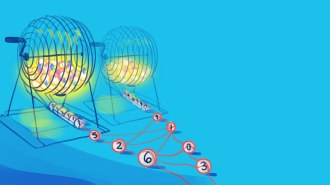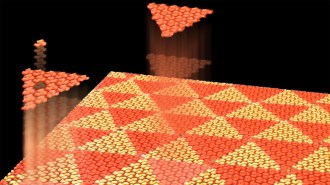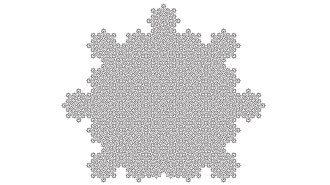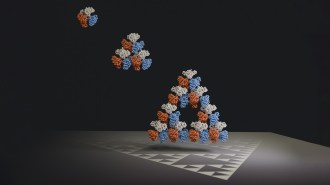See how fractals forever changed math and science
Described by Benoit B. Mandelbrot in 1975, these irregular shapes are everywhere

One of the most famous fractals is the Mandelbrot Set, which demonstrates the property of self-similarity.
Mandelbrot.site
Fifty years ago, “fractal” was born.
In a 1975 book, the Polish-French-American mathematician Benoit B. Mandelbrot coined the term to describe a family of rough, fragmented shapes that fall outside the boundaries of conventional geometry. Mathematicians had been describing these types of shapes since the late 19th century. But by giving them a name — derived from fractus, Latin for “broken” — Mandelbrot gave fractals value. He introduced a way to measure and analyze them. With a name, he recognized order in complexity.
If you know anything about fractals, it’s probably this: Their hallmark trait is self-similarity. No matter how much you zoom in or out, you find similar patterns. Take a snowflake. The overall shape of the crystal is repeated at smaller and smaller scales as the snowflake branches out. (A snowflake and other natural forms are considered only “fractal like,” though, because the pattern breaks down at the level of molecules and atoms.) In a nod to this self-similarity, Mandelbrot often told people that his middle initial, B., stood for “Benoit B. Mandelbrot.” So his full name becomes “Benoit Benoit B. Mandelbrot Mandelbrot.” And spelling out the middle initial again results in “Benoit Benoit Benoit B. Mandelbrot Mandelbrot Mandelbrot.” No matter how many times you iterate, you find him behind his middle initial.

Fractals can take multiple forms — rough lines, jagged shapes or porous solids. They stand out for defying our usual idea of dimension, defined casually as the minimum number of coordinates needed to specify any point within it. A line is one-dimensional, the area inside a circle is two-dimensional, the space inside a sphere is three-dimensional.
Fractals don’t fit neatly in these categories, and Mandelbrot introduced a mathematical definition for fractal dimension, which characterizes the roughness of a curve area or other shape. A shape known as the Koch Snowflake, for instance, has a fractal dimension of about 1.2619.
Fractal-like patterns are ubiquitous, basking on the edges of clouds or the craggy ridges on mountains. “Clouds are not spheres, mountains are not cones, coastlines are not circles,” Mandelbrot once wrote.
Fractal-like structures even appear in the body. “If you don’t have a fractal network of blood vessels, we would probably die every second, every time our heart beats, because it’s a very powerful pump,” says Michel Lapidus, a mathematician at the University of California, Riverside and editor in chief of the Journal of Fractal Geometry. A branching structure, he says, both slows the flow and gets the blood where it needs to go. Fractal-like forms also appear in cancer cells and the lungs.
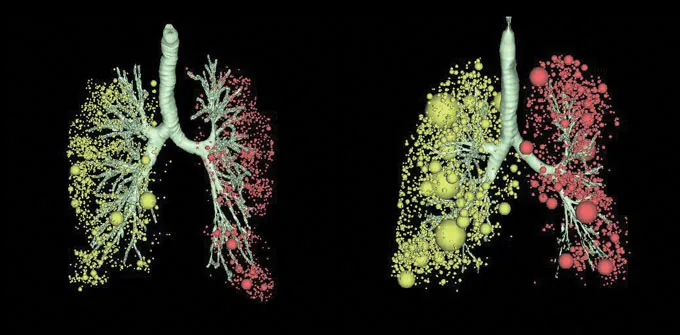
In the last half century, fractals have led mathematicians into unknown terrain, like fractal calculus and fractal algebra. But fractals are more than just a subfield of math. Their characteristic roughness helps scientists visualize chaos and model the evolution of changing systems. They help engineers find new designs for practical gizmos. They even inspire artists and musicians.
In the world of mathematics, Lapidus, who counts Mandelbrot as a friend and was the last person to talk to him before his death in 2010, has unearthed deep connections between fractals and the mathematical field of number theory. He and others have used fractals to analyze the
Riemann zeta function, which is connected to the distribution of prime numbers along the number line. The Riemann hypothesis, which makes a claim about this function, is widely regarded as the most important unsolved problem in all of mathematics, and an underlying fractal structure may one day figure into its proof.
Fractals also permeate society. Mandelbrot and others long suspected that financial markets could be modeled with chaotic fractal processes, though it’s yet to be proved. Researchers have measured the fractal dimension of the drip patterns in Jackson Pollock paintings. Some Johann Sebastian Bach compositions contain fractal-like self-similarity, as the combinations of long and short individual notes repeat at larger scales, in longer and shorter phrases.
While some mesmerizing fractal patterns might be considered art in their own right, they can also be a gateway to practical innovations. “It begins with, ‘Oh, that’s really interesting that you could make these complicated pictures,’ but mathematicians get drawn in, far beyond the pictures,” says Michael Barnsley, a mathematician at the Australian National University in Canberra who was inspired by fractals to design an image-compression strategy.
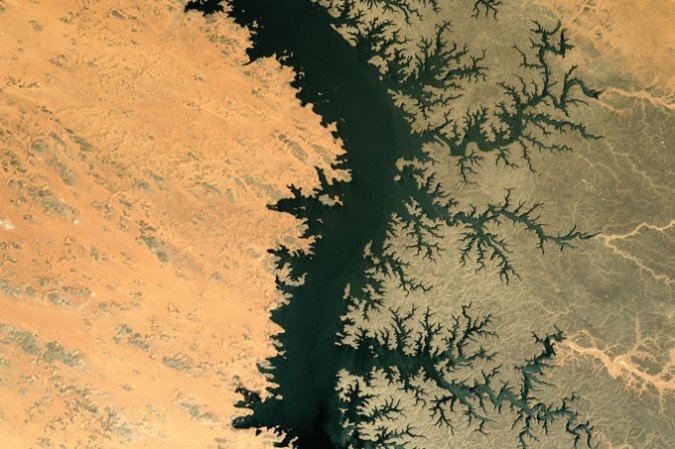
Barnsley began scrutinizing fractals in the 1980s because he was interested in chaos theory, the study of how random processes evolve from simple, deterministic starting points. He recognized that images often include self-similar details — the way a line crosses a pixel in one part of an image might look the same as in another pixel.
From that observation came an image-compression method that could reduce or enlarge parts of an image. By the early 1990s, Microsoft began using the method. Fractal-inspired designs have also been explored for signal processing and data analysis. Fractal-like antennas with tortuous curves enable communication over multiple frequencies and occupy a tiny area in some wireless devices.
Fractals may even prove vital to today’s most transformative technology: AI. Barnsley suspects that as AI companies race to improve algorithms and architectures, they will recognize benefits in exploiting self-similarity. “Our brain is pretty much a fractal-like object,” he says. Connections between neurons are like a self-similar branching system. “And if you’re going to arrive at consciousness, an artificial consciousness,” he says, “it’s got to have a self-referential template inside it.”
